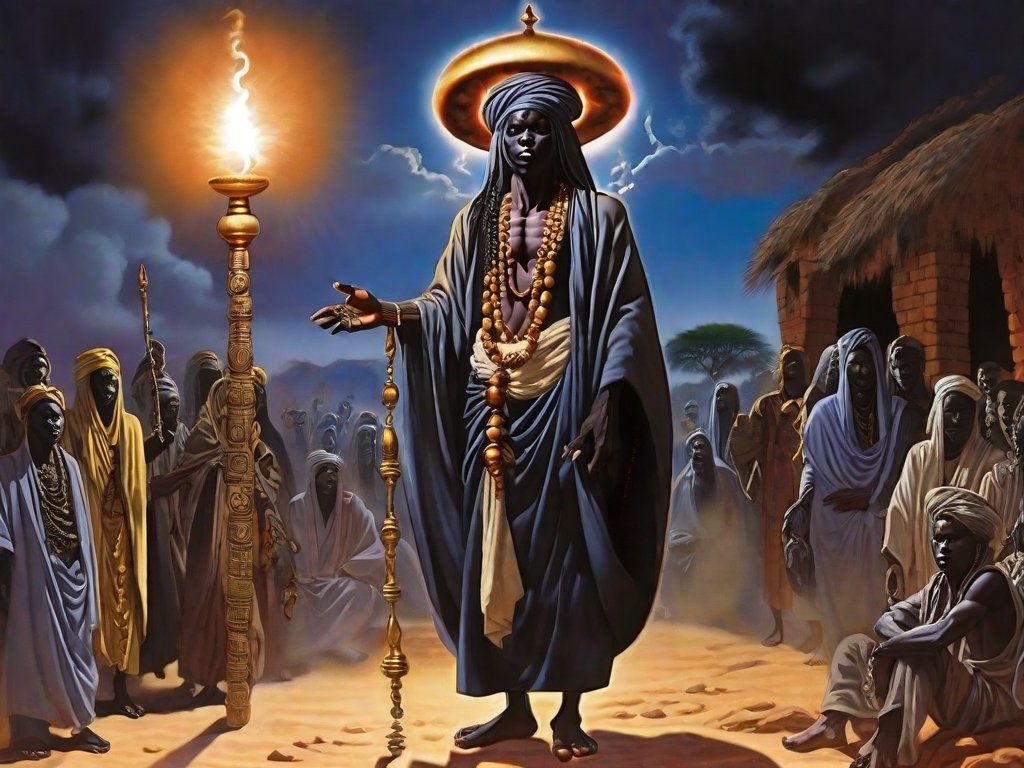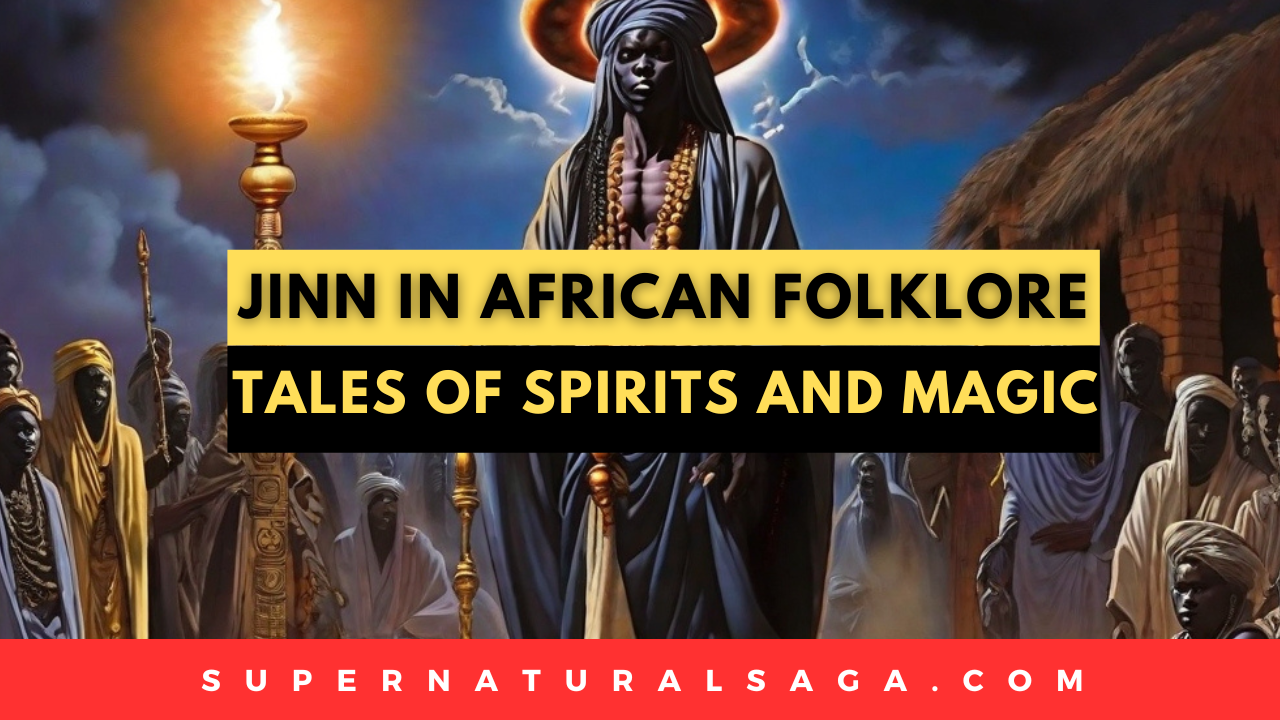Jinn are supernatural creatures that feature prominently in Middle Eastern and Islamic folklore. However, jinn beliefs and legends have also emerged over the centuries among various ethnic groups across Africa.
As Islam spread through parts of Africa, it brought with it ideas about jinn which interacted with existing African folk beliefs.
The result is a rich tapestry of folktales and oral traditions in Africa involving jinn, spirits and magic. This article explores these legends and their role in African culture.
Jinn in Sub-Saharan Africa

Many cultures in sub-Saharan Africa have long had belief systems involving various types of spirits and supernatural forces.
Indigenous African religions often had conceptions of elemental spirits inhabiting nature, including forests, rivers, lakes and mountains.
The introduction of Islam brought with it Middle Eastern concepts of jinn to regions like East Africa, West Africa, Sudan and Chad.
Among some Bantu speaking populations, ‘jinn’ became associated with nature spirits as well as ancestral ghosts and forces believed to cause illness or misfortune.
African folk legends paint jinn as tricksters who can bless, curse, possess humans or cause calamities. Jinn beliefs fused with existing beliefs in protective magic and spirit mediums.
Jinn in the Horn of Africa
In Ethiopia and Somalia, jinn are known as ‘ayn or zahrimar. They are said to be invisible spirits that live in wild places and ruins.
According to folklore, jinn in this region love roasted meat which Somalis place on special small altars for them. Jinn are believed to whistle at night in Somalia. Ethiopians tell of jinn accused of stealing food, strangling enemies or spreading disease.
Magical rituals, incense burning and pilgrimages to shrines devoted to jinn spirits are still practiced by some Ethiopians today. The appearance of the controversial spirit Awwaale on Somali radio shows demonstrates the persistent popular fascination with jinn in this region.
North African Jinn Lore
In ancient Egypt, ‘genie’ spirits predate Islamic times. Later arriving Muslim jinn beliefs fused with existing folklore so jinn became associated with pharaonic tombs, pyramids and ruins. Moroccans tell of jinni living in the Sahara desert called ‘Aisha Qandisha who lures men and kidnaps children.
Tunisian and Algerian folktales speak of jinn haunting old palaces, markets and abandoned sites. In Egypt, a famous legend claims the City of the Jinn lies under the sands near Cairo. According to lore, powerful rituals and incantations can summon these Egyptian jinn to serve a magician.
Jinn in Hausa and Fulani Traditions
Among Hausa people of Nigeria and Niger, jinn are known as ‘iru’ and thought to inhabit wilderness and uninhabited zones.
According to Hausa legends, jinn love to eat dates and can bestow wealth on humans who please them. Misfortune or illness is attributed to jinn possession. Traditional healers perform spirit possession dances to exorcise evil jinn.
Nearby Fulani pastoralists fear jinn called ‘jineegeri’ who live in dense forests and attack lone travellers.
Fulani legends say reciting the Quran near jinn territory can shield people from harm. Jinn possession is blamed for epilepsy or hearing voices. Healers use amulets and prayers to combat jinn.
Jinn in East African Coastal Areas
On the Swahili Coast of East Africa, jinn fused with indigenous beliefs about spirits living on islands, in forests and underwater. Here they are called ‘majini’.
Swahili tales describe jinn with feet turned backwards who spread disease or eat human hearts. The epic legend of Liongo describes jinn spirits who possess humans and cause strife.
Magical practices to access jinn powers are part of Swahili occult traditions. Ritual magic uses jinn spirits to harm enemies, protect homes, and grant wishes.
Taboos warn against saying “thank you” to jinn and avoiding their forest haunts at night. Lamu in Kenya holds an annual jinn festival called Maulidi featuring mystical rituals.
Jinn in Madagascar
The varied ethnic groups of Madagascar have long embraced ancestor worship and magic. Local jinn, called angatra, are said to haunt burial sites, rock formations and nature. Legendary creatures like the fanged, hedgehog-like tsintsinoa are thought to be jinn. Many Malagasy attribute miscarriages, illness and bad luck to angry jinn.
Shamans called ombiasa perform rituals like fortune telling or removing spells using jinn’s power. Small clay shrines containing offerings to appease jinn spirits are common. Ancestral jinn called razana are honoured yearly during the Famaranana festival.
Conclusion
While jinn feature prominently in Middle Eastern and Islamic folklore, they have also profoundly influenced folk beliefs across Africa. As Islam expanded, jinn merged with indigenous spirit traditions and magical practices. Yet jinn also evolved to fit African cultures, developing localised myths and characteristics.
The continued popularity of jinn in African legends, occult rituals, folk Islam and taboos reveals their enduring hold on popular imagination. Jinn remain integral to defining identities and interpreting misfortune. Understanding jinn lore provides deeper insight into both cultural heritage and contemporary worldviews in Africa.

